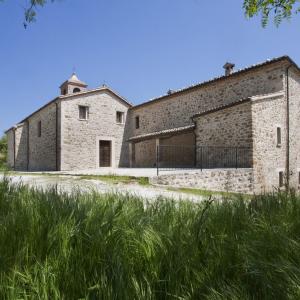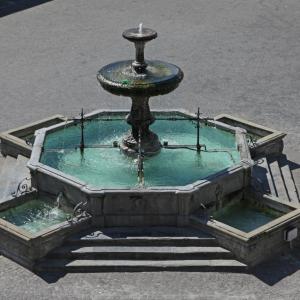A day in the discovery of Novafeltria and its hamlets
From the sea to the mountains by following the paths of the Marecchia River
Modified on: 08-01-2024
If we follow the Marecchia River upstream, from the sea we will soon find ourselves in a green and pulsating heart of nature, landscapes, art and history.
It is an itinerary that can be followed by car, or by bike pedalling along the cycle path surrounded by villages and fortresses, or even on foot, for lovers of walking and trekking.
Leaving behind the sea, and before our arrival in the centre of Novafeltria, we meet the first hamlets that are part of this Municipality: Ponte Santa Maria Maddalena and Uffogliano.
The village of Ponte Santa Maria Maddalena which rises downstream, along the banks of the Marecchia and where most of the population lives, is a hamlet of Uffogliano and is characterised by the presence of a river crossing, the bridge, and a chapel dating back to 1574, dedicated to the cult of Santa Maria
Maddalena, destroyed over the centuries. Also worth mentioning is the beauty of this stretch of narrow river, rich in water and large stones polished by its flow, and the mill (now a restaurant) which preserves the old structure and the original mechanisms.
In Uffogliano instead there is an important complex of recently restored religious buildings, including the Church, the rectory and other rooms.
Continuing our itinerary we meet Secchiano, in whose hamlets one can admire two beautiful churches, a tiny one in the village of Cà Rosello dating back to 1855 and the Pieve di Santa Maria, whose origins date back to before the year 1000.
Leaving behind the hamlet of Secchiano, one crosses a short stretch within the Municipality of Talamello to then find oneself in the Municipality of Novafeltria once again: by car, you reach the historic centre of Novafeltria, while along the cycle path you first cross the Ivan Graziani Park, and then from here you go up towards the centre, which is only a few hundred metres away.
In the historic centre of Novafeltria the eye is immediately captured by Palazzo Segni, the current seat of the municipal offices, in the Italian Art Nouveau style known as “Liberty”, characterised by a portico where in 1926 the first café, still active today, was opened, and by the Oratory of Santa Marina, a clear example of Romanesque structure, whose construction dates back to 1191.
Along Corso Mazzini, the Teatro Sociale di Novafeltria merits a visit. It is a jewel in the Liberty style, built with the contribution of 72 local families and inaugurated in 1925 with Piccini’s Boheme, while at the end of the Main road, known as the “Corso”, the eye is captured by the Pieve di San Pietro in Culto, of Romanesque origin.
If you are not tired and you want to travel a few more kilometres, going up towards Sant’Agata Feltria, we reach another hamlet worthy of note: Perticara.
Perticara, surrounded by pine forests on a slope of Monte Aquilone, was a mining centre of national importance. Sulphur was extracted already in ancient times but the main vein was exploited only from 1917, engaging 1,600 men in what became a true underground city with 100 kilometres of tunnels on 9
levels. An activity, ceased in 1964, which deeply affected the life of the village and its community, allowing it to reach five thousand residents.
Here the Sulphur Museum keeps the memory of this extraordinary past alive.
For info on the territory:
Tourist Information - UIT Novafeltria - Novafeltria
Piazza Vittorio Emanuele, 2 - tel: (+39) 0541 845619, (+39) 0541 845620 urp@comune.novafeltria.rn.it

